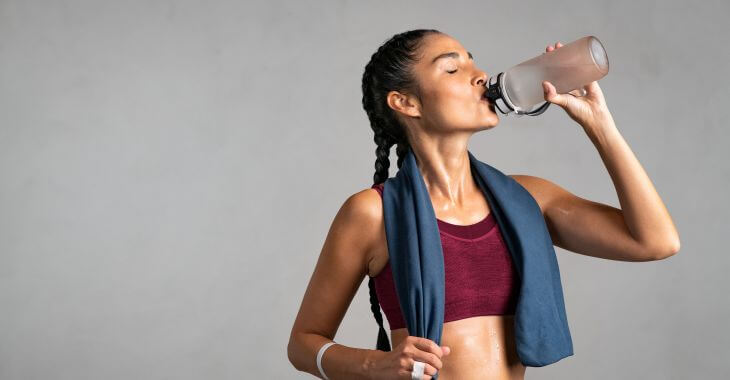How Long After Rhinoplasty Can I Workout?

Rhinoplasty, commonly known as a nose job, is a surgical procedure aimed at altering the shape, size, or function of the nose. One common concern among patients undergoing rhinoplasty is nose job recovery and a question that is often asked is ,”How long after rhinoplasty can I workout?”
While rhinoplasty can yield transformative results, it also requires a period of recovery to ensure optimal healing and outcomes. For those concerned about how long after rhinoplasty they will need to wait to workout or exercise, the following information can help plan for the nose job recovery period.
Understanding Nose Job Recovery
Rhinoplasty is typically performed under general anesthesia or local anesthesia with sedation, and the procedure can vary in complexity depending on the extent of correction required. Following surgery, patients are usually monitored for a brief period before being discharged to recover at home.
During the initial days after rhinoplasty, it is normal to experience swelling, bruising and discomfort around the nose and surrounding areas. The nose may be bandaged or splinted to support the new nasal structure and aid in healing, as well as nasal packing or internal splints for stabilization.
In the first week of nose job recovery, patients are advised to rest and avoid strenuous activities. It is crucial to follow post-operative instructions provided by your surgeon, which may include guidelines on activity restrictions. While rest is needed, gentle movements are encouraged to promote circulation.
Exercise After Rhinoplasty: What to Consider
Exercise is an integral part of a healthy lifestyle, but it is essential to approach it cautiously after rhinoplasty. Engaging in strenuous physical activities too soon can disrupt the healing process and potentially compromise the results of your nose job. Here are some key considerations:
- Impact on Healing: Vigorous exercise increases blood flow and heart rate, which can lead to increased swelling and potential bleeding in the immediate postoperative period. Excessive strain or pressure on the nasal area during exercise may also affect the tissues and structures that are healing.
- Swelling and Bruising: Swelling and bruising are common side effects of rhinoplasty, and engaging in strenuous exercise can exacerbate these symptoms. Intense physical activity may prolong swelling and delay the resolution of bruising, impacting the appearance of the nose during the recovery period.
- Risk of Injury: Rhinoplasty involves reshaping and restructuring the nasal framework, which can make the nose more vulnerable to injury in the early stages of healing. Activities that involve impact or contact sports should be avoided to prevent trauma to the nose and surrounding areas.
Guidelines for Exercise After Rhinoplasty
The timeline for resuming exercise after rhinoplasty varies depending on individual factors such as the extent of surgery, rate of healing, and overall health. While it’s essential to follow your surgeon’s specific instructions, here are general guidelines for returning to workouts after rhinoplasty:
Immediate Post-Op Period (First Week)
During the initial week following rhinoplasty, focus on rest and gentle movement. Avoid activities that elevate your heart rate or increase blood pressure, including strenuous exercise, heavy lifting, and bending over.
Weeks 2-4
As swelling and discomfort begin to subside, you can gradually introduce light aerobic activities such as walking or stationary cycling. Start with short sessions of low-impact exercise, but if you experience any pain or increased swelling, scale back your activity level and consult your surgeon.
Weeks 4-6
By the fourth week post-surgery, most patients can resume moderate-intensity exercise such as jogging, swimming, or light weightlifting. However, it is essential to avoid activities that involve straining or bearing down, such as heavy lifting or intense abdominal exercises.
Weeks 6 and Beyond
After six weeks, many patients are cleared to return to their full exercise routine, including high-intensity workouts and contact sports. However, continue to be mindful of your body’s response and avoid activities that put excessive pressure on the nose or risk injury.
Other Considerations
In addition to following these exercise guidelines, there are other factors to consider during rhinoplasty recovery:
- Consultation with Your Surgeon: Before resuming exercise, consult with your surgeon for personalized advice based on your specific procedure and recovery progress. Your surgeon can assess your healing and provide recommendations tailored to your needs.
- Protecting Your Nose: During exercise, be mindful of protecting your nose from accidental bumps or impacts. Consider wearing protective gear such as a soft splint or nasal guard, especially during activities with a higher risk of injury.
- Listen to Your Body: Pay attention to how your body responds to exercise and adjust your activity level accordingly. If you experience any pain, swelling or discomfort, scale back your workouts and give your body more time to heal.
- Stay Hydrated and Nourished: Proper hydration and nutrition are essential for supporting the healing process. Drink plenty of water and eat a balanced diet rich in vitamins, minerals, and protein to promote optimal recovery.

While regular exercise is an important aspect of a healthy lifestyle, it is crucial to approach it with caution after rhinoplasty. By following the guidelines provided by your surgeon and listening to your body’s signals, you can safely return to your workout routine within a few weeks of rhinoplasty.
The information provided on this website, including text, graphics, images, and other materials, is intended solely for informational purposes and should not be used as a substitute for professional medical advice, diagnosis, or treatment.

)